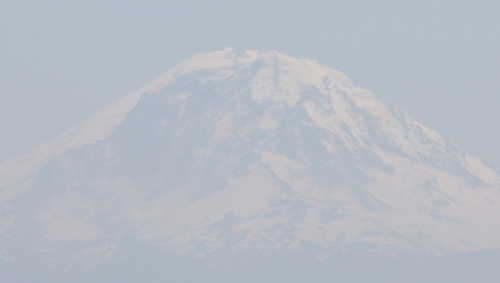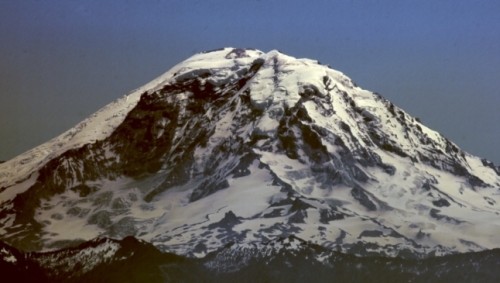Abstract
Photographing distant objects is challenging for a number
of reasons. Even on a clear day, atmospheric haze often
represents the majority of light received by a camera. Unfortunately,
dehazing alone cannot create a clean image.
The combination of shot noise and quantization noise is
exacerbated when the contrast is expanded after haze removal.
Dust on the sensor that may be unnoticeable in the
original images creates serious artifacts. Multiple images
can be averaged to overcome the noise, but the combination
of long lenses and small camera motion as well as time
varying atmospheric refraction results in large global and
local shifts of the images on the sensor.
An iconic example of a distant object is Mount Rainier,
when viewed from Seattle, 90 kilometers away. This paper
demonstrates a methodology to pull out a clean image of
Mount Rainier from a series of images. Rigid and non-rigid
alignment steps brings individual pixels into alignment. A
novel local weighted averaging method based on ideas from
“lucky imaging” minimizes blur, resampling and alignment
errors, as well as effects of sensor dust, to maintain the
sharpness of the original pixel grid. Finally dehazing and
contrast expansion results in a sharp clean image.
|
|
|


